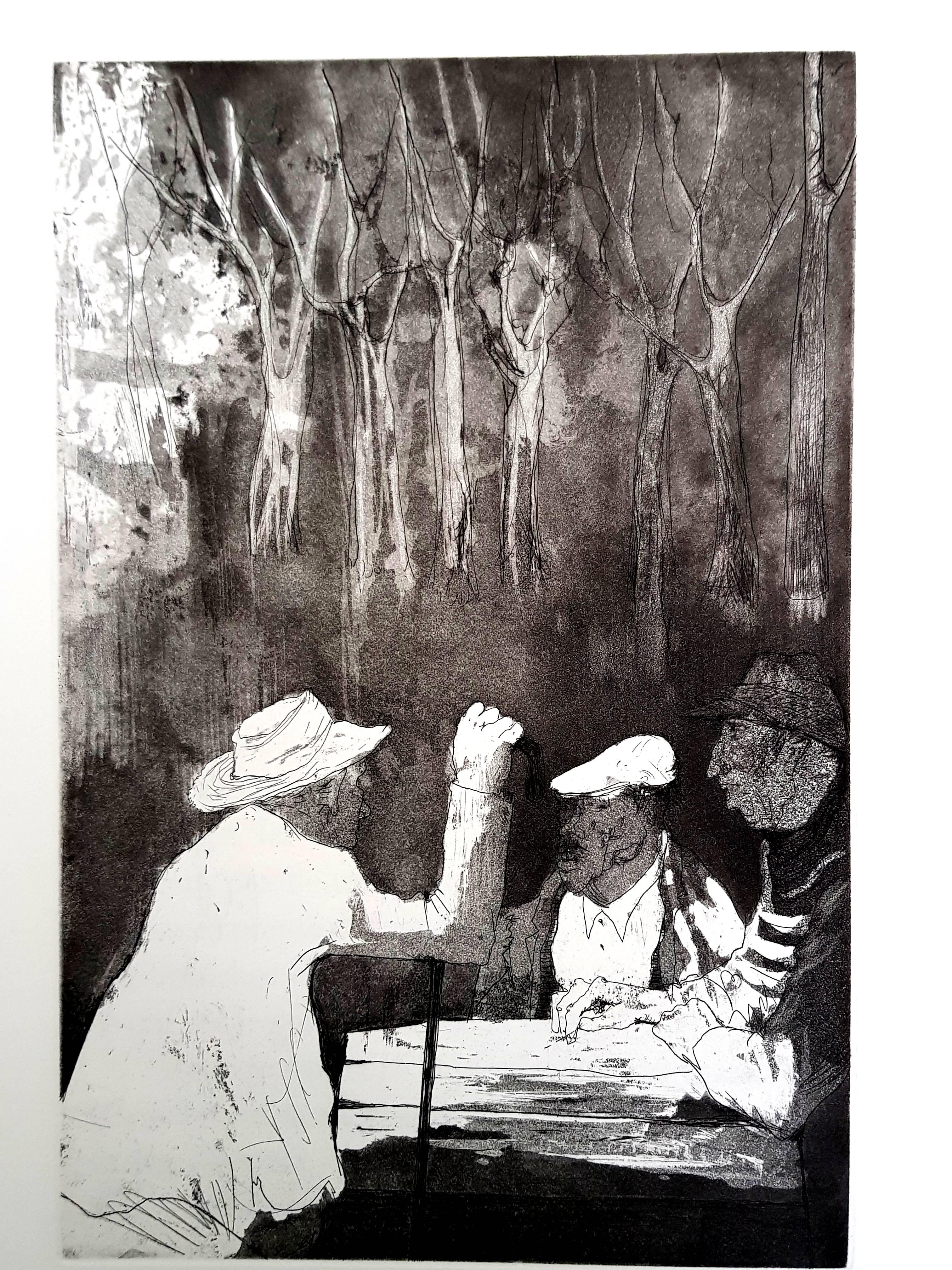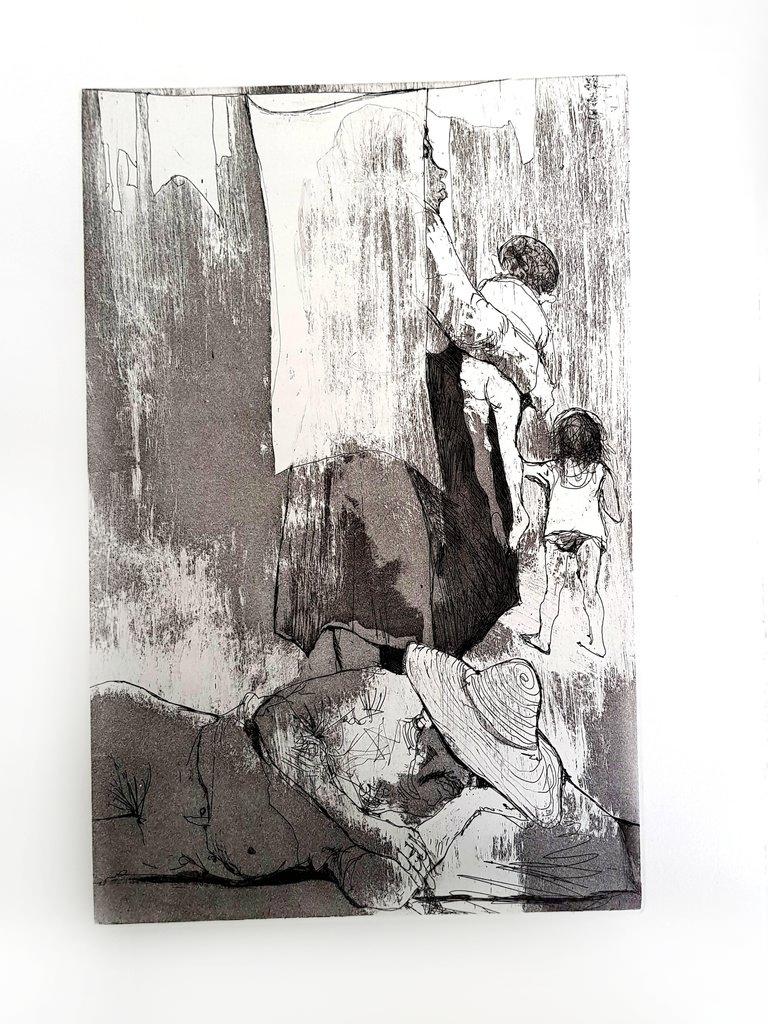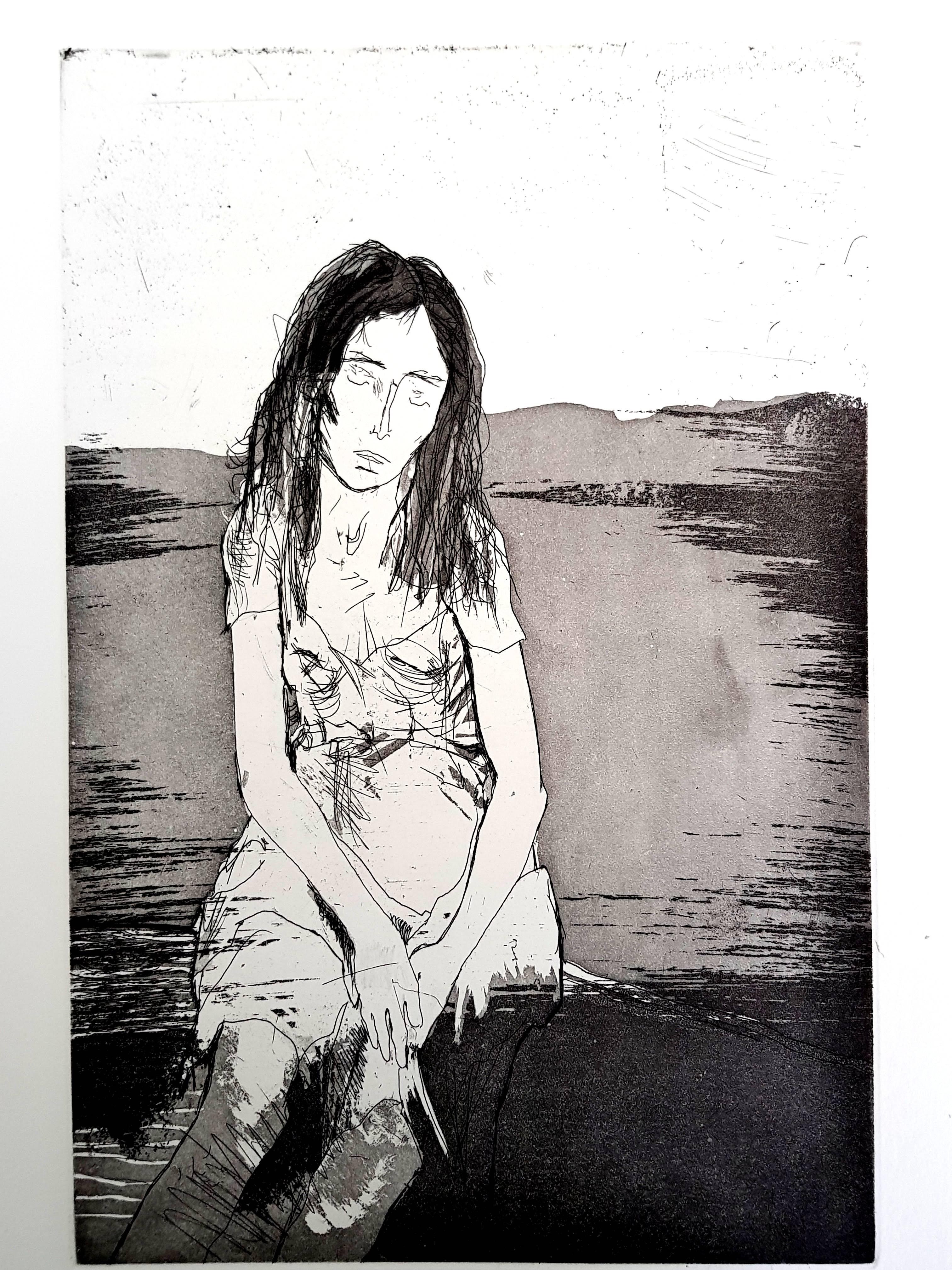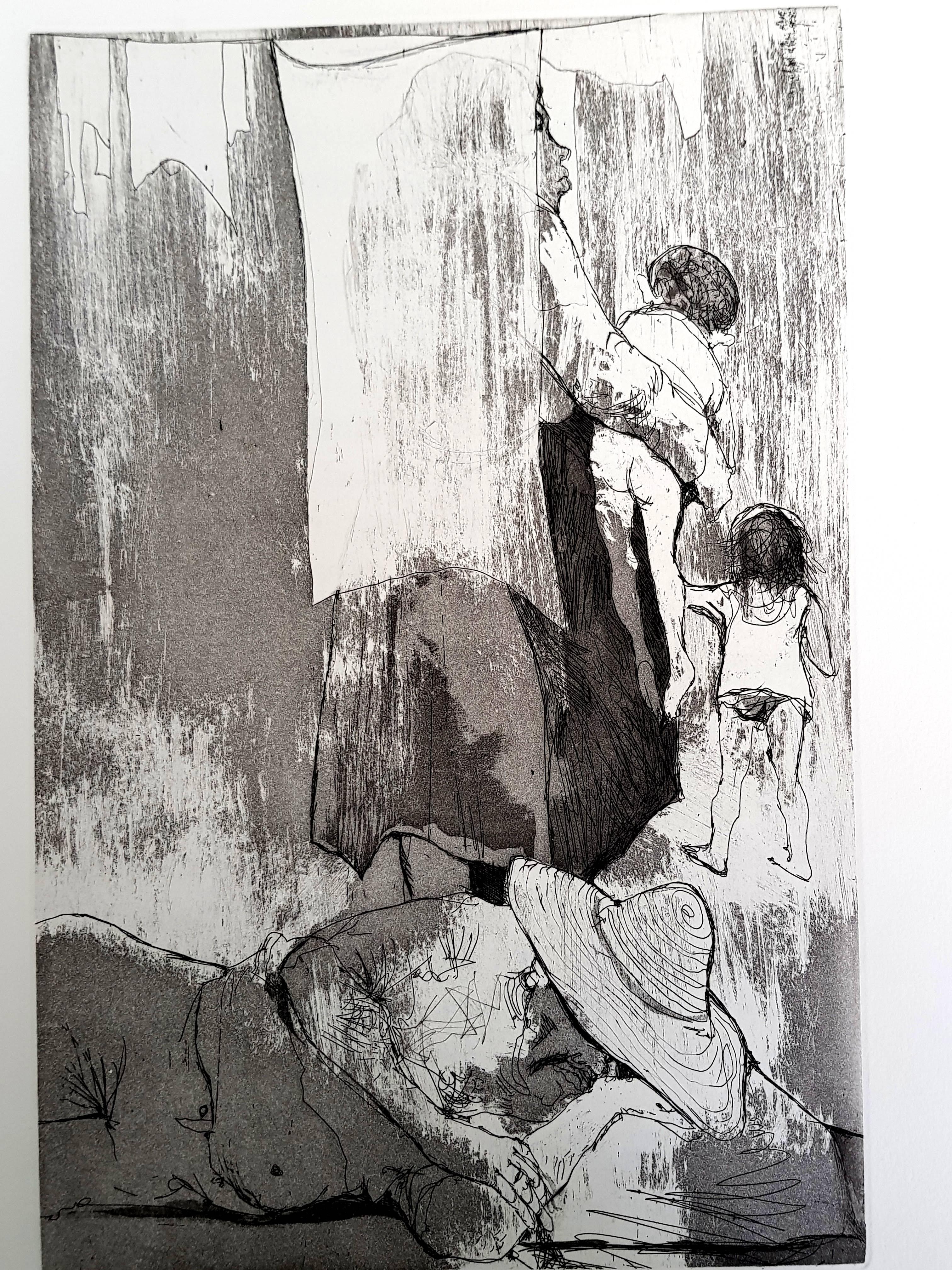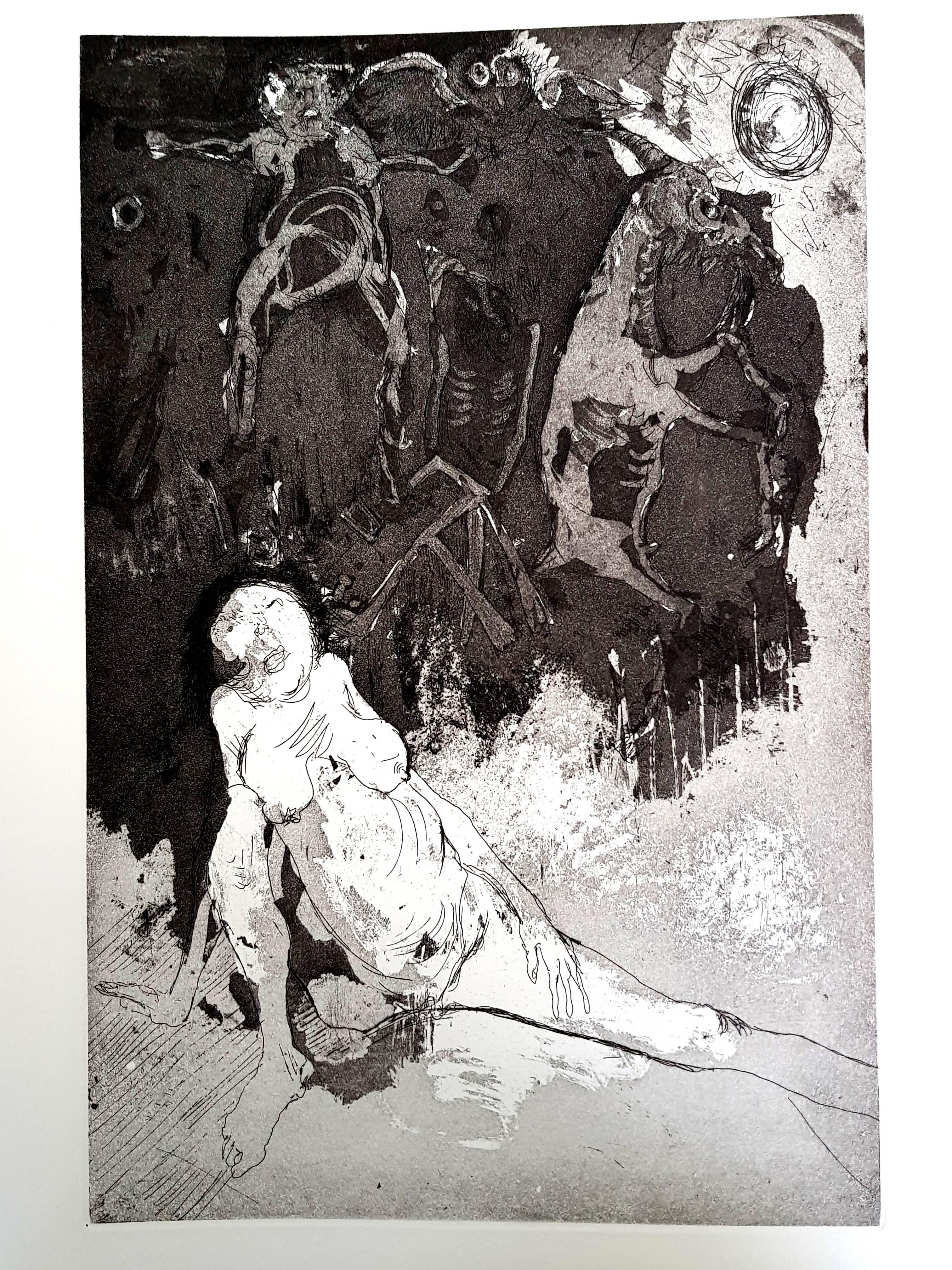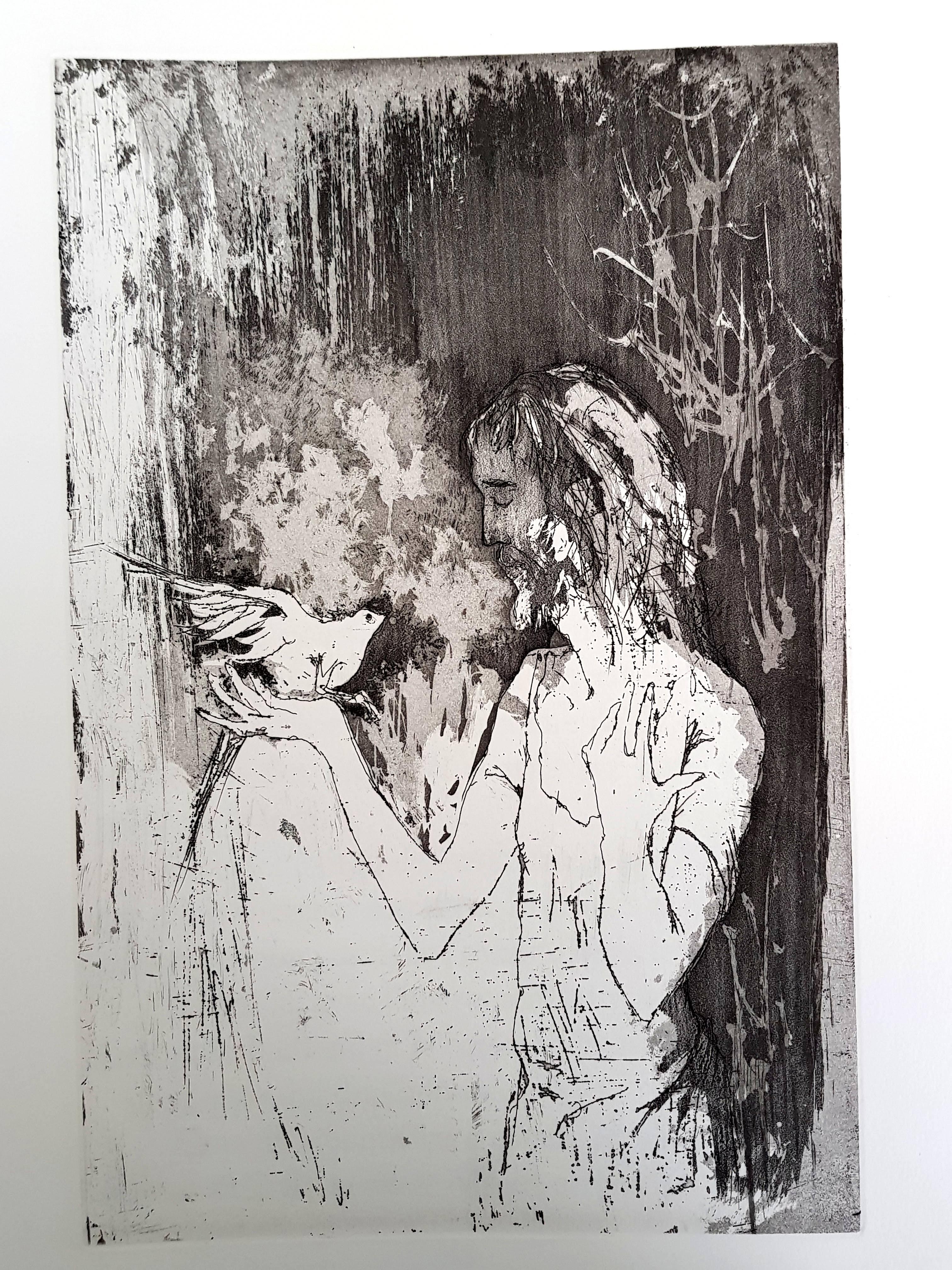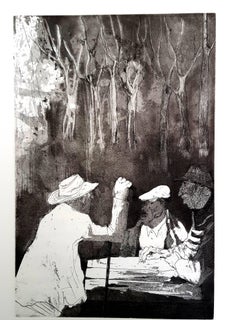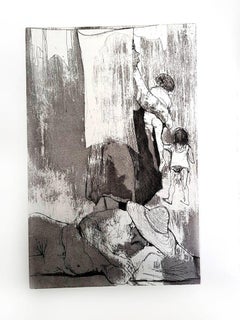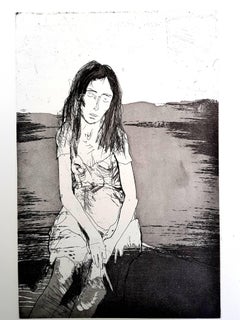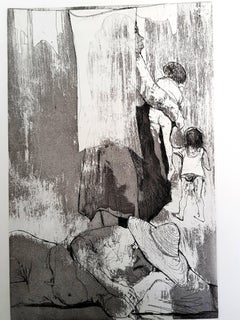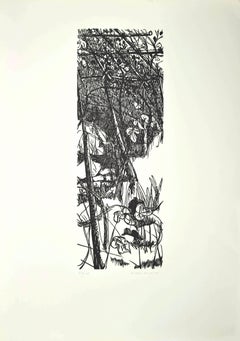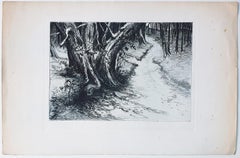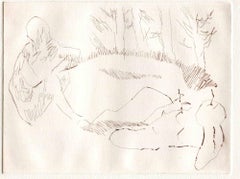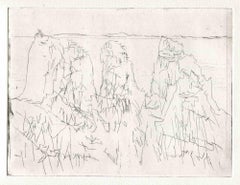Items Similar to Jean Jansem - Original Etching
Want more images or videos?
Request additional images or videos from the seller
1 of 8
Jean JansemJean Jansem - Original Etching1974
1974
$589.61
£448.30
€500
CA$827.11
A$903.69
CHF 475.29
MX$10,864.63
NOK 5,984.27
SEK 5,618.43
DKK 3,808.26
About the Item
Jean Jansem - Original Etching
Title: Loneliness
Dimensions: 40 x 30 cm
Edition of 175
Paper: vélin de Rives
1974
Jean Jansem was born in 1920 at Seuleuze in Asia Minor and spent his early childhood in Salonika. When he was twelve years old his family settled in Paris.
As a schoolboy he liked to copy reproductions of ancient sculptures, then following an accident in which he broke the bones of his foot, he spent three years in hospital. Thus, at an age when most children were playing, Jansem came to know the meaning of solitude. This long period of physical inactivity accustomed him to long periods of reflection and meditation, and from this came the gravity that has always characterized him.
Although the early chapters of his artistic life were difficult, in fact up to the war his most lucrative work was in the decorative arts - producing designs for fabrics and designing furniture, he never lost sight of his real passion, namely painting.
From 1934 – 1936 he attended a variety of evening classes in Montparnasse and the Marais. He met fellow Armenian teacher, Ariel, who taught him to draw, but it was in the works of Picasso that he found his grand revelation.
Before he was sixteen he had been admitted to the Ecole des Arts Decoratifs (1936 - 1938) where Beianchon, Leguelt and Oudet exercised a silent and unobtrusive influence on the young artist. During 1937 he completed a training course at the Beaux-Arts and at Atelier Sabatier.
In 1950 he went to Greece and it was in the Mediterranean that he discovered light, until then his painting had been sombre. Throughout the Greek countryside he eagerly sketched the shadowy figures who had surrounded him in his infancy and who until then had remained hidden in his subconscious mind - peasants, fishermen, tradesmen. All these he submitted to his friendly scrutiny, these men, women and children whose work was the same from one ocean to another and from one continent to another. He stripped them of the accessories that particular societies might have added to their essential, changeless characteristics.
Then followed a period of activity in which he won many awards, in 1951 the Prix Populiste, 1953 the Prix Antral, 1954 the Bourse Natioale, in 1958 Prix Comparaison in Mexico.
In 1959 he participated in the Biennale de Bruges. He is a member of the Salon d'Automne and has participated in:
Salons des Independents, Salon des Tuileries, Salon d'Art Sacre, Salon de l,'Ecole de Paris, Salon des Peintres temoins de leur temps.
He has exhibited in Salon d'Atitimne, Salon de Comparaison, Salon du Dessin and Salon de la Peinture a 1'eau. His paintings appear in Museums at Ville de Paris, Ennery de Paris, Poitiers and several Art Museums in the U.S.A.
- Creator:Jean Jansem (1920 - 2013, French)
- Creation Year:1974
- Dimensions:Height: 15.75 in (40 cm)Width: 11.82 in (30 cm)Depth: 0.04 in (1 mm)
- Medium:
- Movement & Style:
- Period:
- Condition:
- Gallery Location:Collonge Bellerive, Geneve, CH
- Reference Number:1stDibs: LU16122170073
Jean Jansem
Jean Jansen is a figure, landscape, marine and genre painter of European subjects: fishermen and children of Greece, bullfighting in Spain, Italian landscapes and markets, scenes of Venice and French France village marketplaces and landscapes. He was born in 1920 in Seuleuze, Asia Minor (Armenia) and spent his childhood in Salonika, Greece. He arrived in France at the age of 11 where he started painting. He took evening courses in the Montparnasse Quarter in Paris, and graduated from the School of Arts Dératifs in 1938. He often visited the atelier of "La Grande Chaumière", and exhibited his first oil painting at the "Salon des Indépendants" in 1939. Since 1951, Jansem has held exhibitions of his work in France (Paris, Amiens, Nantes, Avignon, Marseille, Nancy, Toulouse, Cannes, Mulhouse, Bayonville, Clermont-Ferrand...) and in other countries (Rome, Palermo, Lausanne, New-York, Chicago, Palm-Beach, London, Brussels, Montréal, Tokyo, Osaka, Beirut, Sao Paolo, Johannesburg, Germany, Art Expo New York and Los Angeles.
About the Seller
4.9
Gold Seller
Premium sellers maintaining a 4.3+ rating and 24-hour response times
Established in 2015
1stDibs seller since 2015
967 sales on 1stDibs
Typical response time: 1 hour
- ShippingRetrieving quote...Shipping from: Collonge Bellerive, Geneve, Switzerland
- Return Policy
Authenticity Guarantee
In the unlikely event there’s an issue with an item’s authenticity, contact us within 1 year for a full refund. DetailsMoney-Back Guarantee
If your item is not as described, is damaged in transit, or does not arrive, contact us within 7 days for a full refund. Details24-Hour Cancellation
You have a 24-hour grace period in which to reconsider your purchase, with no questions asked.Vetted Professional Sellers
Our world-class sellers must adhere to strict standards for service and quality, maintaining the integrity of our listings.Price-Match Guarantee
If you find that a seller listed the same item for a lower price elsewhere, we’ll match it.Trusted Global Delivery
Our best-in-class carrier network provides specialized shipping options worldwide, including custom delivery.More From This Seller
View AllJean Jansem - Original Etching
By Jean Jansem
Located in Collonge Bellerive, Geneve, CH
Jean Jansem - Original Etching
Title: Loneliness
Dimensions: 40 x 30 cm
Edition of 175
Paper: vélin de Rives
1974
Unsigned and unumbered as issued
Category
1970s Modern Figurative Prints
Materials
Etching
Jean Jansem - Original Etching
By Jean Jansem
Located in Collonge Bellerive, Geneve, CH
Jean Jansem - Original Etching
Title: Loneliness
Dimensions: 40 x 30 cm
Edition of 175
Paper: vélin de Rives
1974
Jean Jansem was born in 1920 at Seuleuze in Asia Minor and spent h...
Category
1970s Modern Figurative Prints
Materials
Etching
Jean Jansem - Original Etching
By Jean Jansem
Located in Collonge Bellerive, Geneve, CH
Jean Jansem - Original Etching
Title: Loneliness
Dimensions: 40 x 30 cm
Edition of 175
Paper: vélin de Rives
1974
Category
1970s Modern Figurative Prints
Materials
Etching
Jean Jansem - Original Etching
By Jean Jansem
Located in Collonge Bellerive, Geneve, CH
Jean Jansem - Original Etching
Title: Loneliness
Dimensions: 40 x 30 cm
Edition of 175
Paper: vélin de Rives
1974
Unsigned and unumbered as issued
Category
1970s Modern Figurative Prints
Materials
Etching
Jean Jansem - Original Etching
By Jean Jansem
Located in Collonge Bellerive, Geneve, CH
Jean Jansem - Original Etching
Title: Loneliness
Dimensions: 40 x 30 cm
Edition of 175
Paper: vélin de Rives
1974
Unsigned and unumbered as issued
Category
1970s Modern Figurative Prints
Materials
Etching
Jean Jansem - Saint- Original Etching
By Jean Jansem
Located in Collonge Bellerive, Geneve, CH
Jean Jansem - Original Etching
Title: Saint
Dimensions: 40 x 30 cm
Edition of 175
Paper: vélin de Rives
1974
Jean Jansem was born in 1920 at Seuleuze in Asia Minor and spent his ear...
Category
1970s Modern Figurative Prints
Materials
Etching
You May Also Like
Plants - Original Etching - Late 20th Century
Located in Roma, IT
Plants is an original print on ivory-colored paper, realized by unknown artist of 20th Century.
The state of preservation of the artwork is very good with small folding on the lower...
Category
Late 20th Century Contemporary Figurative Prints
Materials
Etching
Landscape - Etching on Paper - 20th Century
Located in Roma, IT
Landscape is an original etching on paper realized by an unknown artist of the XX century.
The State of preservation is very good with some small stain on the margins.
Sheet dimen...
Category
20th Century Modern Figurative Prints
Materials
Etching
$206 Sale Price
30% Off
Figure - Original Etching and Drypoint - Mid-20th Century
Located in Roma, IT
Figure in Landscape is an original print in etching, aquatint and drypoint on paper realized by an anonymous artist of the mid-20th Century.
In very good conditions.
The artwork cr...
Category
Mid-20th Century Modern Figurative Prints
Materials
Drypoint, Etching
Composition - Original Etching and Drypoint - Mid-20th Century
Located in Roma, IT
Composition is an original print in etching and drypoint on paper realized by an anonymous artist of the mid-20th Century.
In very good conditions.
The artwork created through conf...
Category
Mid-20th Century Modern Figurative Prints
Materials
Etching, Drypoint
Painter - Original Etching and Drypoint - Mid-20th Century
Located in Roma, IT
Painter is an original print in etching and drypoint on white paper realized by an anonymous artist of the Mid-20th Century.
In very good conditions.
The artwork created through def...
Category
Mid-20th Century Modern Figurative Prints
Materials
Drypoint, Etching
Tension - Original Etching - The Late 20th Century
Located in Roma, IT
Tension is an original contemporary artwork realized in the late 20th century by an unknown artist.
Mixed colored etching. Hand signed on the lower right "Annibel".
Titled on the l...
Category
Late 20th Century Modern Figurative Prints
Materials
Etching
More Ways To Browse
Maurice Cohen
Medieval Woodcut
Mein Leben Chagall
Mermaid Etching
Michel Pellus
Moonwalk Warhol
Morisot Etching
Motown Art
Mr Brainwash Happy Birthday
Mucha Hamlet
Mucha Salon Des Cent
Murakami Champagne Supernova
Oldrich Kulhanek
Otto Kuhler On Sale
Pablo Picasso Etching 1966
Pablo Picasso La Ronde De La Jeunesse
Pablo Picasso Serie
Pablo Picasso Serigraph
